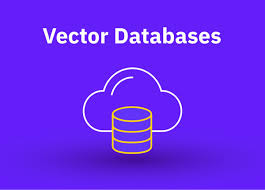
The Rise of Vector Databases
Powering the Future of AI
Introduction
Artificial Intelligence (AI) and data-driven applications are evolving at an unprecedented pace. With the increasing demand for real-time search, recommendation systems, and generative AI, traditional relational databases struggle to keep up. This is where vector databases step in, offering a powerful solution for handling high-dimensional data efficiently.
Vector databases are becoming a crucial technology in AI-driven applications, enabling faster and more accurate similarity searches for unstructured data such as text, images, and audio. In this article, we’ll explore what vector databases are, how they work, their importance in AI, and how businesses can leverage them effectively.
What is a Vector Database?
A vector database is a specialized type of database designed to store and search high-dimensional vector embeddings. Unlike traditional relational databases that rely on structured tabular data, vector databases manage unstructured data by representing it as numerical vectors.
Key Differences from Traditional Databases:
- Data Representation: Stores high-dimensional vectors instead of structured rows and columns.
- Search Mechanism: Uses similarity search rather than exact keyword matches.
- Performance Focus: Optimized for handling large-scale AI applications, making them significantly faster for unstructured data queries.
High-dimensional vectors play a key role in AI by enabling machines to understand and process different types of data, such as images, speech, and text, in a more intuitive way.
How Vector Databases Work
At the core of vector databases is the concept of vector embeddings—numerical representations of complex data generated by machine learning models. These embeddings allow AI models to perform similarity searches efficiently.
How Similarity Search Works:
- Data is converted into high-dimensional vectors using AI models like Word2Vec, BERT, or CLIP.
- Vectors are stored in the database and indexed for fast retrieval.
- Queries are matched based on similarity (e.g., cosine similarity, Euclidean distance) rather than exact keyword matches.
Compared to traditional databases that rely on exact keyword searches, vector databases excel at retrieving relevant results even when the search terms don’t match precisely. This makes them ideal for AI applications like recommendation systems, voice recognition, and image search.
Why Vector Databases Are Essential for AI
Vector databases are a game-changer for AI-driven applications due to their ability to handle unstructured data efficiently. Here’s why they are crucial:
- Handling Unstructured Data: AI applications generate vast amounts of text, images, and audio that need structured retrieval.
- Speed and Efficiency: Real-time similarity searches enable faster responses in AI models.
- Real-World Use Cases:
- Large Language Models (LLMs): Powering Retrieval-Augmented Generation (RAG) to provide accurate responses.
- Image Recognition: Searching and classifying images based on features rather than filenames.
- Recommendation Systems: Matching users with content based on behavior and preferences.
Choosing the Right Vector Database
Several vector databases are available, each with unique features. Popular options include:
- Milvus – Open-source, scalable, and widely used for AI applications.
- Pinecone – A cloud-native vector database optimized for search and recommendation.
- Weaviate – Offers built-in ML models for easy integration.
- FAISS (Facebook AI Similarity Search) – Highly optimized for large-scale similarity searches.
- Qdrant – Open-source and optimized for high-performance vector search.
Key Factors to Consider:
- Performance: Latency and speed of retrieval.
- Scalability: Handling growing datasets efficiently.
- Integration: Compatibility with existing AI workflows.
- Deployment: Cloud vs. on-premises solution
Setting Up a Vector Database
Setting up a vector database involves several steps:
- Installation and Configuration: Choose a vector database and set up the environment.
- Importing Data & Generating Embeddings: Convert data into vectors using AI models.
- Querying & Optimizing Search: Use indexing techniques to improve search performance.
For example, using FAISS, you can index a dataset and perform a similarity search with just a few lines of Python code.
Advanced Concepts in Vector Databases
To further optimize vector searches, advanced techniques are used:
- Approximate Nearest Neighbor (ANN) Search: Methods like HNSW, IVF, and PQ speed up searches by reducing computational complexity.
- Similarity Metrics: Cosine similarity, Euclidean distance, and dot product are commonly used to measure vector similarity.
- Filtering & Metadata Indexing: Allows refining searches based on additional criteria.
Vector Databases and Large Language Models (LLMs)
Vector databases play a crucial role in enhancing LLM capabilities by enabling:
- Efficient Retrieval-Augmented Generation (RAG): Fetching relevant information in real time.
- Reducing Hallucinations: Providing accurate responses based on factual data.
- Real-Time Knowledge Integration: Keeping AI models updated with the latest information.
Best Practices and Optimization Tips
To maximize the performance of vector databases, follow these best practices:
- Data Normalization & Dimensionality Reduction: Reduces computational complexity.
- Query Optimization: Use indexing techniques for faster retrieval.
- Monitoring & Scaling: Ensure smooth performance for large datasets by adjusting indexing parameters and scaling infrastructure as needed.
Future of Vector Databases in AI
The future of vector databases looks promising, with key trends including:
- Integration with real-time AI applications for personalized search and recommendations.
- Advancements in ANN algorithms for even faster retrieval.
- Next-generation search engines leveraging vector-based search for improved accuracy and relevance
Conclusion
Vector databases are revolutionizing the way AI models handle and retrieve unstructured data. Their ability to perform efficient similarity searches makes them indispensable in modern AI applications, from LLMs to recommendation engines.
For developers and businesses, adopting vector databases can unlock new possibilities in AI-driven innovation. Now is the time to explore and implement this powerful technology to stay ahead in the ever-evolving AI landscape.
Interested in implementing vector databases? Start experimenting today and experience the future of AI-powered search!
Reach out to us on HERE AND NOW AI
&
Follow us on :

